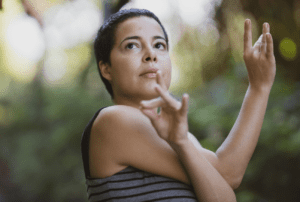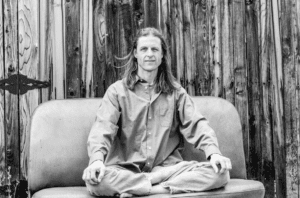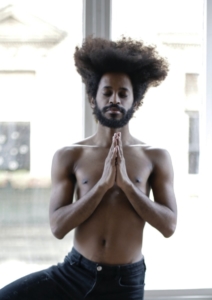
The rhythm of our culture has changed in response to COVID-crisis. For some, the mandated isolation has been the source of angst and others relished the chance to slow down. And we should also recognize the toll on human life across the globe, God rest their souls.
Personally, my response has been to offer a meditation class to the general public as a way of bringing peace and empowerment into people’s homes. As part of that class, we recite the mahamrityunjaya mantra, also known as “the healing mantra”.
For those who may have been attending the class, or those who may have an interest in the larger scope of yoga, I wanted to elaborate on the significance of the mantra.
Mahāmṛtañjaya Mantra
Om tryambakaṁ yajāmahe
sugandhim pūṣtivardhānam
urvārukamiva vandanān
mṛtyor mukśīya māmṛtāt
We worship Thee, oh sweet God of transcendental vision,
Giver of strength, who liberates from death.
May we be free from the bonds of death,
Like a ripe fruit dropping from the tree.
May we never again forget our immortal nature.
For the skeptic, it may seem a stretch that chanting would somehow translate into healing. How then does a mantra correspond to healing? Is it simply based on sentiment or are there other factors involved?
To answer this question, let us view the mantra from its indigenous perspective, which is very distinct from our modern, science-based world view.
Firstly, the healing mantra comes to us from a different time and paradigm quite unlike our own. In days gone past, people lived in the center of the natural world. They were much more attuned to her forces, rhythms, and currents.
Early yogis saw subtle, vibratory patterns woven into the fabric of the creation. These pre-manifest fields of energy are the preliminary force underlying Sanskrit mantras. Mantras are the vocal equivalent of these forces. Of course, they can be chanted silently as well. Through their recitation, our body and psyche align with these greater vibratory patterns. The resonance of the healing mantra is one of healing benediction.
“Its resonance is that of healing benediction.”
Secondly, mantras are embedded in mythology. In the case of the healing mantra, Lord Shiva, “God of transcendental vision”, rescues a teenage boy from a fated death and grants him immortality. The boy’s plight is not unlike our own. All of us are destined to pass, and yet, through the power of yoga, we can discover our immortal essence, the timeless atman or soul.
In India, as with many cultures, the lines between “mythology” and the material world are blurred. Parables, such as the origin of the healing mantra, are imbued with archetypal forces indelibly written in the hearts and minds of a culture. These stories are further brought to life by festivals and sacred places of pilgrimage – a living mythology you might say.
“These stories are further brought to life
By festivals and sacred places of pilgrimage.”
Thirdly, yogic wisdom places a premium on interior life; subjective experiences, particularly more expansive states of mind, have a validity unto themselves. Our felt-motivation behind our actions shape outcomes differently, even if it is the same action. Mom’s casserole, cooked with love, is much more satisfying than the store-bought variety, even if they are made with the exact same ingredients.
Similarly, our felt connection to or faith in the mantra will also shape its effectiveness. Some people readily embrace faith while others remain skeptical, which will result in different outcomes. Regular yoga practice, which may include mantra, increase one’s faith, either in themselves or the greater creation-equation.
In summary, yoga is an ancient system for total wellbeing and integration born out of the revelations of ancient sages who looked deeply into the patterns of nature and directly perceived the voice of mantra. Many of their discoveries and teachings were chronicled in the form of archetypal myths. In part, these myths come to life through faith and reverence. Mantras, such as the healing mantra, help us to attune to forces greater than our finite intellectual understanding.
Hatha Yoga Meditation Class
Taught from the serenity of my ‘yoga basement’ this class will emphasize the direct practice of tantric hatha yoga meditation, more so than theory or explanation.
Forty-minute class format:
– Intro and asana
– Candle lighting and Mahamritunjaya mantra (for personal and collective healing)
– Dedicated pranayama practice
– Guided meditation
– Closing mantra (Shantipath for peace)
Dates and Times and Location:
W/F | April 22nd to May 1st | 7:30am – 8:15am
Zoom link provided upon registration. = No charge =
Hope to see you there.
Yours in Peace,





 What does it take to be a yoga teacher training student?
What does it take to be a yoga teacher training student? 